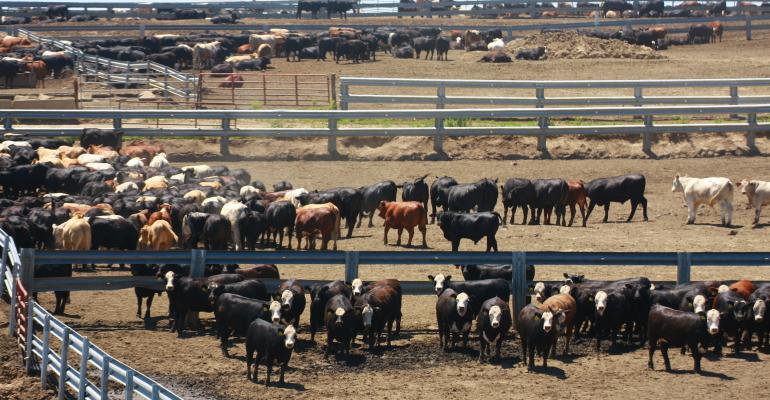Meat production rises as producers holding animals due to recent backlogs leads to heavier weights.
July 13, 2020

Cattle and hog slaughter have recovered better than anticipated but maintaining the higher slaughter levels will be critical to working through the backlog of animals, according to American Farm Bureau Federation economist Michael Nepveux.
“Fed cattle slaughter has settled around 95% of full capacity, but this may be the most that the industry can accomplish given the measures put in place at facilities to combat the spread of COVID-19,” he said. “Hog slaughter has returned to above 2019 levels and is mostly in line with its pre-COVID-19 trajectory.”
Maintaining current slaughter levels is particularly critical for the pork complex, Nepveux said, given that the U.S. Department of Agriculture “Hogs & Pigs” report indicated a larger volume of animals in the pipeline for later in the summer, meaning there may not be much room at slaughter facilities to clear additional animals that have backed up.
“The breeding decisions that resulted in this larger volume were made long before the impacts of COVID-19 could be imagined,” he noted.
Weights on the rise
The backlog of animals has forced producers to keep animals longer. Longer days on feed has resulted in an increase in live and dressed weights of animals in the supply chain.
Nepveux said this has created a problem with cattle carcass weights. He explained that cattle carcass weights tend to seasonally decline and bottom out in late spring, then rebuild to a peak in October or November. This year, however, he said carcass weights have mostly held steady throughout the summer because of the slowdown of throughput at the plants the last few months and the backlog of animals that slowdown created in the country’s feedyards.
“Over the previous two months, dressed steer carcass weights have averaged approximately 45 pounds over 2019 weights. These above-average carcass weights will likely be with us for several more months before returning to their normal pattern.”
While carcass weights have not been affected to the same degree as cattle, Nepveux said there will still be an uptick in market hog carcass weights, as well.
Heavier weights mean larger production, he added.
As the U.S. meat sector moves into the fall, Nepveux suggested higher fed and feeder cattle prices will likely occur “as the incredibly light placements from this spring become slaughter ready.”
Further, he said that while animals are still largely backed up through the system, healthy margins in the processing sector will hopefully incentivize packers to attempt to aggressively pull animals through the system and work through the backlog.
You May Also Like


.png?width=300&auto=webp&quality=80&disable=upscale)
